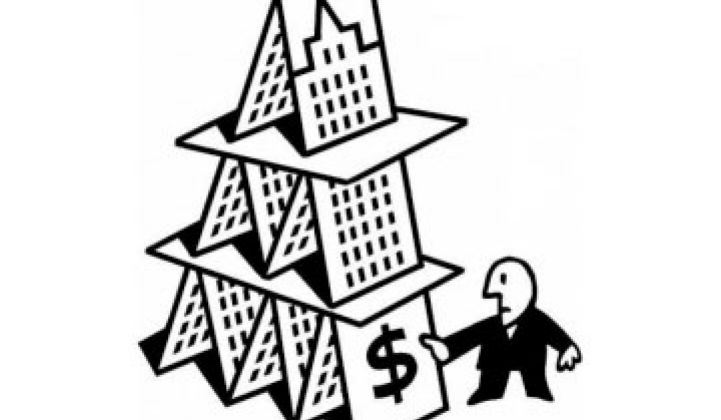Li Hejun, the rags-to-riches billionaire CEO of China's Hanergy, has suggested that his firm will be a global leader in solar technology. But reports on the company in a recent Financial Times article indicate some extremely enthusiastic accounting practices -- and some signs of desperation.
In 2012, Hanergy, the owner of gigawatts' worth of hydropower, wind and solar assets, acquired MiaSolé, a technologically accomplished CIGS thin-film solar firm, for a fraction of that company's original VC investment. In 2013, Hanergy acquired gallium-arsenide solar developer Alta Devices for an undisclosed amount. Alta and MiaSolé joined CIGS firms Solibro and Global Solar Energy under the Hanergy roof. With little synergy amongst the acquired firm's technologies, Hanergy's solar shopping spree appeared less than focused.
Today, Hanergy is the world’s largest solar company by market cap, and Li Hejun, the founder of Hanergy Group, is China’s fifth-richest man. The Hong Kong-listed subsidiary of Hanergy, Hanergy Thin Film Power Group, has a market cap of $14 billion, more than triple the market cap of First Solar, a solar firm that actually builds solar products and power plants.
FT "has found some unconventional practices behind Hanergy Group’s soaring fortunes. It has been racking up enviable revenues largely through sales between its listed subsidiary, HTF, and itself."
Here are some tidbits from the FT report:
- Nearly all of Hanergy Thin Film’s HK$14.8 billion in reported revenue since 2010 has been from sales of equipment to its parent, Hanergy Group, which controls 73 percent of its shares.
- Frank Dai Mingfang, chief executive of HTF, "brushed off all worries in an interview with the FT -- as well as reports that hedge funds were shorting its shares -- as being rooted in a basic misunderstanding about Hanergy’s product line. “No one else can do what we do with solar power embedded in glass windows.”
- Mingfang said that as of June 2014, HTF had delivered 2.4 gigawatts' worth of production equipment. However, company officials noted only 200 megawatts of the total 2.4 gigawatts could be considered to be on-line.
A WSJ article notes that Hanergy "Clocked gross margins of 85.1 percent and net margins of 53.8 percent, levels unseen elsewhere in the ultracompetitive solar world. First Solar, also involved in thin film, achieved only 22.5 percent gross margins and 8.6 percent net. On a closer look, however, that profit is mostly on paper. Hanergy’s operations lose cash because it isn’t getting paid in time by its biggest customer: its parent."
According to company presentations, Hanergy's pipeline includes a 50-megawatt plant in Henan province, a 19-megawatt plant in California, and a 400-megawatt PV project in Ghana.
A report in the English edition of the Caixin Online website finds that Hanergy managers "brushed aside concerns about the slumping solar industry and thin-film production costs, arguing their company 'is not a seller of thin-film panels. We sell electricity.'"
Figure: 2013 Solar Company Revenues
Source: Bloomberg, Financial Times
LH Equity Research, an unknown research house (?) with only one research report from analyst Bill Lin, writes, "The Hanergy Solar business itself is a complete fraud and worth nil." Lin continues, "In our opinion, Hanergy Solar and its controlling shareholder Hanergy Holding Group Ltd. have been purposely manipulating its business and financials," adding, "100 percent of its revenue was related-party sales to its controlling shareholder, and was heavily manipulated to achieve a gross margin of 80.5 percent and net margin of 69.3 percent" in 1H 2013.
Lin suggests that the thin film acquisitions were "questionable" and made "with the sole purpose of being able to tell stories." GTM has reached out to Lin for further comment.
The statement from Mingfang of Hanergy ("No one else can do what we do with solar power embedded in glass windows") and the firm's most recent press release (see photo below) show a company focused on building-integrated photovoltaics (BIPV).
In the U.S. startup world, talk of BIPV, or coating window glass (or steel) with PV materials, typically occurs when a solar company is running on fumes or a charlatan is in the room.



